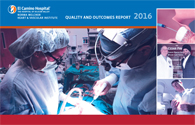Aortic Aneurysm
An aneurysm can become life-threatening if the artery walls split — called a dissection — or the aneurysm ruptures, both of which can cause uncontrolled bleeding.
There are two types of aortic aneurysms:
- Abdominal aortic aneurysms – More common than thoracic aneurysms, these aneurysms occur in the abdominal portion of the aorta. Most often, they're caused by atherosclerosis — or hardening of the arteries — a condition in which a fatty substance called plaque builds up inside your arteries.
- Thoracic aortic aneurysms – This type of aneurysm occurs in the part of the aorta that runs through your chest and is usually caused by high blood pressure or sudden injury. People with some inherited connective tissue disorders have a greater risk of developing thoracic aortic aneurysms.
Abdominal aortic aneurysms are more common in men aged 60 and older with at least one or more risk factors, including a family history of the aortic aneurysms, emphysema, high blood pressure, high cholesterol, obesity and smoking. Men and women are equally likely to get thoracic aortic aneurysms, and the risk for developing the condition increases with age.
Prevention
Conditions and habits that damage your heart and blood vessels also increase your risk for aortic aneurysm. By practicing heart-healthy behaviors such as eating a healthful diet, getting regular exercise, limiting alcohol and abstaining from smoking can help lower your risk of aortic aneurysms. The Norma Melchor Heart & Vascular Institute at El Camino Health offers a variety of classes and programs to help you lower your risk.
Some risk factors — such as a family history of aneurysms or connective tissue disorders — can’t be controlled, so it’s important to get screened if you're at increased risk. Screening is recommended for men between 65 and 75 with a history of smoking or for anyone in that age range who has a family history of aortic aneurysms. When aneurysms are found early, your doctor can prescribe medications and lifestyle changes to treat the condition before it causes serious complications.
Symptoms and Diagnosis
When symptoms exist for an abdominal aortic aneurysm, they may include:
- Throbbing or deep pain in your back or side.
- Pain in your buttocks, groin or legs.
Symptoms for a thoracic aortic aneurysm may include:
- Sharp, sudden pain in your chest or upper back.
- Shortness of breath or rapid heartbeat.
- Trouble breathing or swallowing, or hoarseness.
- Other symptoms such as swelling of the neck, clammy skin, or nausea and vomiting.
At El Camino Health, our doctors use ultrasound or another imaging exam to diagnose aneurysms and plan treatment.
Treatment
Our vascular specialists can provide some of the latest therapies to treat aneurysms. How they treat the condition will depend on the size and location of the aneurysm. Treatment may include:
- Monitoring. If the aneurysm is small and isn't causing symptoms, your doctor may recommend routine testing to make sure it isn't growing.
- Medication. In some cases, your doctor may prescribe medication to lower blood pressure, relax blood vessels and minimize the risk of rupture.
- Surgical repair. Whenever possible, your doctor will use minimally invasive endovascular surgery — performed through a small incision in your upper thigh — to treat an aneurysm. If the severity of the aneurysm requires traditional surgery, surgeons at El Camino Health can perform even the most advanced surgical procedures to repair the artery.
